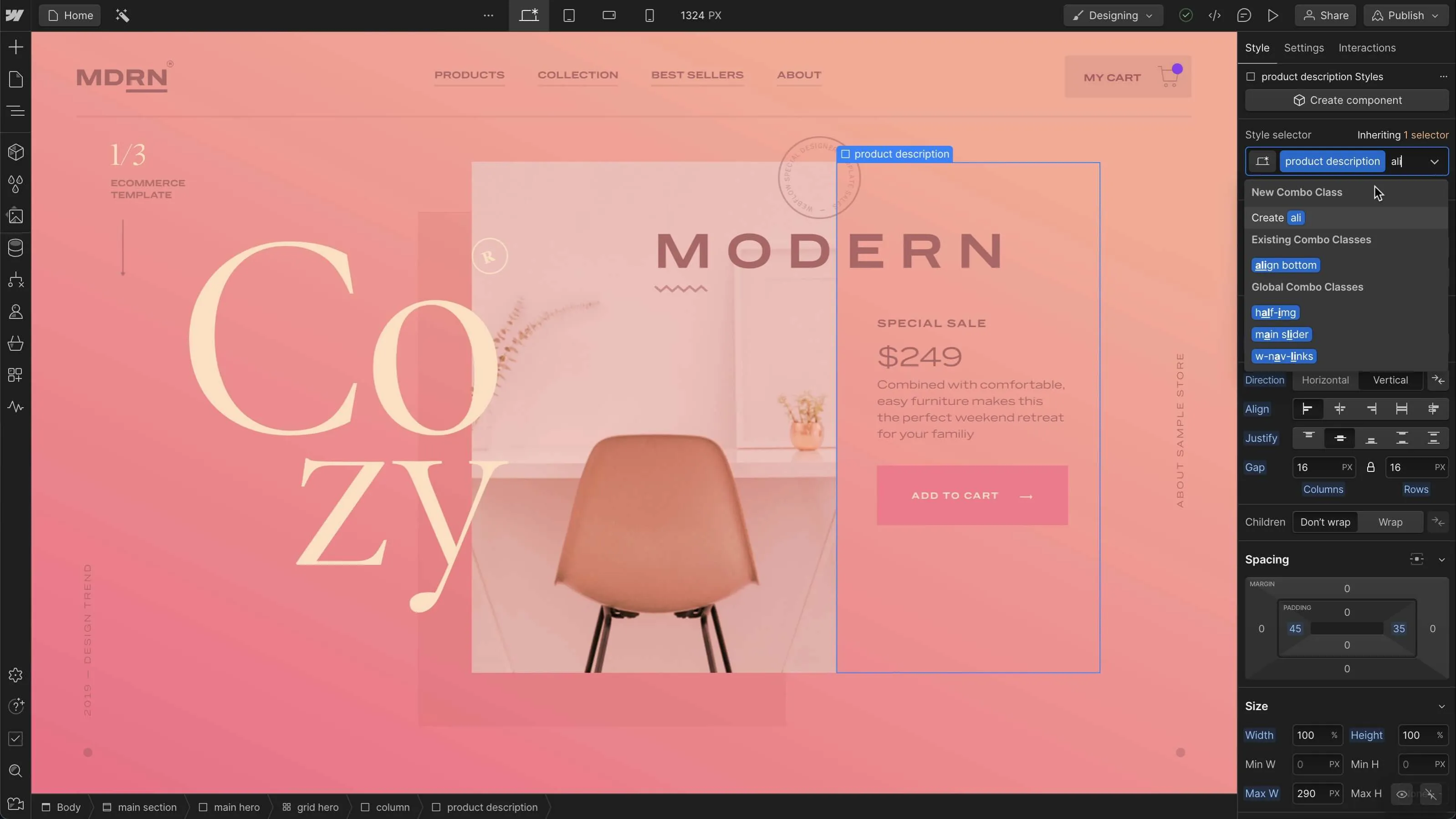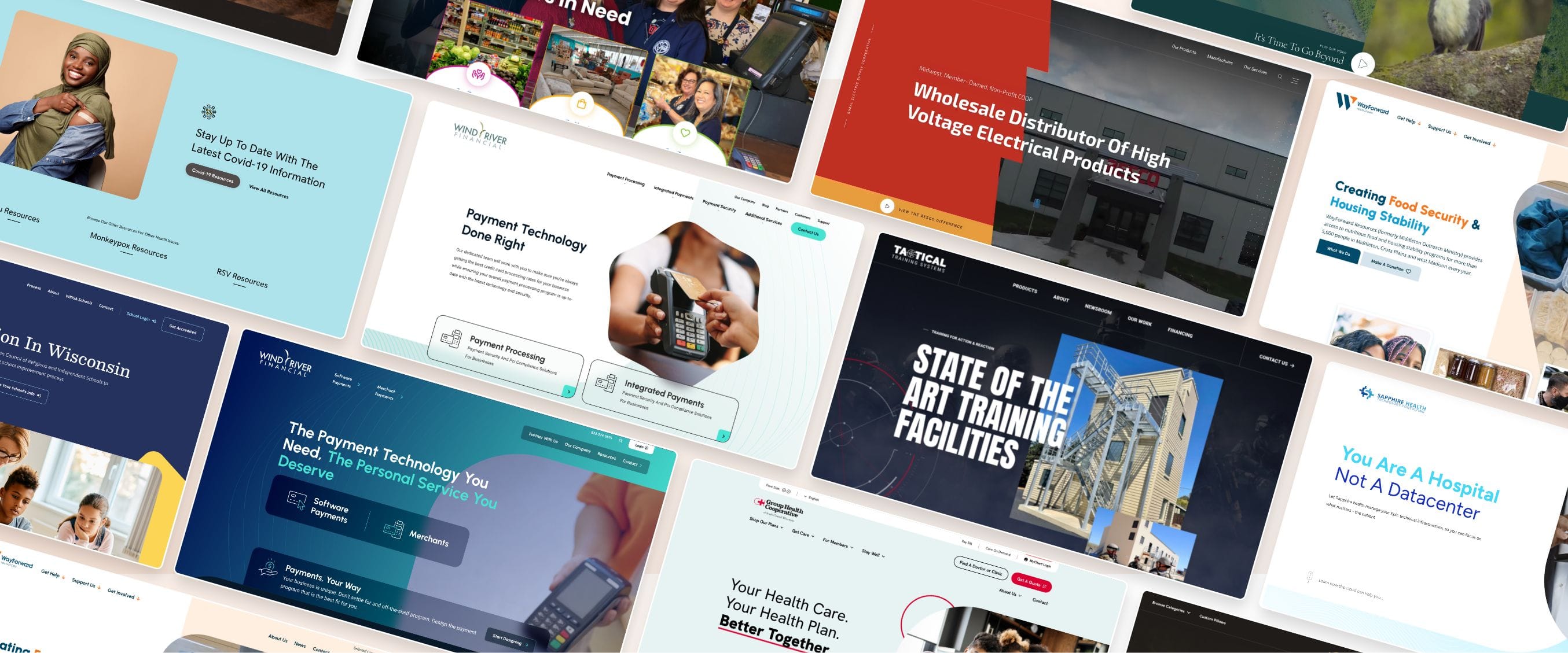Top Trends in Website Design for 2024: What You Need to Know
Top Trends in Website Design for 2024: What You Need to Know
Blog Article
Modern Site Design That Records Focus and Transforms
In an increasingly digital landscape, modern-day website layout has actually become a pivotal consider catching user attention and driving conversions. By purposefully utilizing aesthetic pecking order, receptive layouts, and involving interactive components, designers can produce experiences that not only bring in site visitors however likewise assist in significant communications. Additionally, reliable call-to-action methods play an essential role in assisting customers toward preferred end results. As we explore these vital elements, it ends up being clear that comprehending their interaction can considerably influence a site's efficiency and individual fulfillment. What are the crucial elements that genuinely make a difference?
Significance of Visual Power Structure
Visual pecking order is a vital aspect in website layout, as it overviews customers' attention and improves their overall experience. By tactically organizing web content, designers can direct users to the most essential info first, thereby raising involvement and improving use.
Integrating a logical flow in content setup is essential; for circumstances, putting the most vital information at the top of a web page promotes prompt recognition. Moreover, consistent use typography, such as differing font sizes and designs, helps develop a clear web content framework. This company not just help in navigation yet additionally develops trust, as individuals feel extra comfortable when they can easily discover what they are trying to find.
Eventually, a well-executed aesthetic power structure not just improves visual charm but additionally dramatically influences customer habits. By focusing on essential components and making sure a smooth experience, developers can successfully convert site visitors right into clients, strengthening the relevance of this fundamental layout principle in contemporary internet site development.
Responsive Design for All Instruments
Creating a seamless experience across various tools is vital in today's electronic landscape, where customers gain access to internet sites from smartphones, desktop computers, and tablet computers alike. Receptive style is a crucial technique that makes sure internet sites adjust fluidly to different display positionings, dimensions, and resolutions. By employing versatile grids, pictures, and CSS media inquiries, designers can produce layouts that maintain visual integrity and functionality, regardless of the gadget being used.
The importance of receptive layout prolongs beyond aesthetic appeals; it straight affects customer interaction and conversion rates. A web site that operates well on all gadgets encourages longer brows through and decreases bounce rates, as individuals are most likely to interact with web content that is easy to browse. Moreover, internet search engine, particularly Google, prioritize mobile-friendly sites in their rankings, making responsive design a vital part of search engine optimization (SEO)
Including receptive design not only improves customer experience yet additionally streamlines the development procedure. By developing a solitary website that functions throughout tools, companies can conserve time and resources compared to developing separate mobile and desktop computer versions. Inevitably, responsive style is an essential technique for modern-day internet site layout, guaranteeing availability and complete satisfaction for all users, no matter their tool.
Engaging Interactive Elements
While a responsive style prepares for a functional site, incorporating appealing interactive aspects is important for recording user attention and cultivating deeper connections. Website Design. Interactive components, such as animations, tests, and clickable infographics, create a more vibrant user experience, motivating visitors to spend even more time on the website
Incorporating interactive attributes can likewise lead customers via complex information, making it easier to absorb web content. Interactive sliders can highlight product variations, while embedded video clips can offer demonstrations or endorsements that reverberate even more than static photos or text. Furthermore, gamification strategies, like incentives for completing jobs or engaging with web content, can enhance customer inspiration and retention.
Efficient use interactive elements not just improves the user experience yet can additionally lead to higher conversion rates. By making communications interesting and pleasurable, companies can grow a feeling of loyalty and depend on with their target market. It is vital to stabilize interactivity with performance; extremely intricate attributes might hinder site rate, adversely affecting customer satisfaction. Inevitably, incorporating properly designed interactive elements can significantly elevate a web site's effectiveness, driving interaction and conversions in today's affordable digital landscape.
Structured Navigation Practices
Efficient navigation is a keystone of any type of successful site, as it directly affects customer experience and content availability. Structured navigation methods guarantee that users can quickly find info, enhancing their communication with the site. A well-structured navigation food selection ought to be instinctive and straightforward, normally featuring a restricted number of main groups to avoid overwhelming visitors.
To attain streamlined navigating, designers ought to prioritize an ordered structure that realistically arranges material. Applying breadcrumb trails can give users with context concerning their present area within the site, permitting go to these guys seamless backtracking. Additionally, making use of drop-down menus can properly save area while still giving access to subcategories.
Receptive layout is vital, as navigating ought to be useful throughout all devices (Website Design). Mobile customers, specifically, gain from touch-friendly food selections and collapsible areas that maintain usability without jeopardizing appearances

Efficient Call-to-Action Techniques
A well-crafted call-to-action (CTA) is necessary for assisting individuals toward preferred end results on a website, as it urges them to involve with web content or buy. To maximize their effectiveness, CTAs need to be clear, compelling, and tactically placed throughout the website.
First, utilize action-oriented language that communicates seriousness visit our website or value, such as "Get going," "Join Now," or "Insurance claim Your Discount." This language not only encourages users however likewise establishes clear assumptions regarding the next steps.
Second, take into consideration design elements; CTAs must stick out aesthetically via contrasting colors, adequate whitespace, and popular positioning. A button that is very easy to see and click increases the probability of individual interaction.
Furthermore, personalizing CTAs based upon individual behavior or demographics can considerably enhance engagement. Tailored messages resonate a lot more with customers, driving higher conversion rates.

Verdict
In final thought, modern-day website design highlights the assimilation of aesthetic power check these guys out structure, receptive formats, engaging interactive aspects, structured navigating, and effective call-to-action methods. These elements jointly boost user experience, guaranteeing that visitors continue to be involved and encouraged to explore content better. By focusing on these layout principles, businesses can dramatically boost customer retention and conversion prices, inevitably bring about better success in the electronic landscape. The continual advancement of internet layout underscores its vital function in efficient on the internet communication and marketing.
In an increasingly electronic landscape, modern site design has actually arised as a pivotal factor in recording customer interest and driving conversions.Visual pecking order is an important component in web site style, as it overviews users' focus and improves their overall experience.The relevance of receptive layout expands beyond appearances; it straight impacts customer involvement and conversion prices.Including receptive design not just improves user experience however also simplifies the advancement process. Inevitably, responsive style is a fundamental approach for modern-day site layout, making sure accessibility and contentment for all users, no matter of their gadget.
Report this page